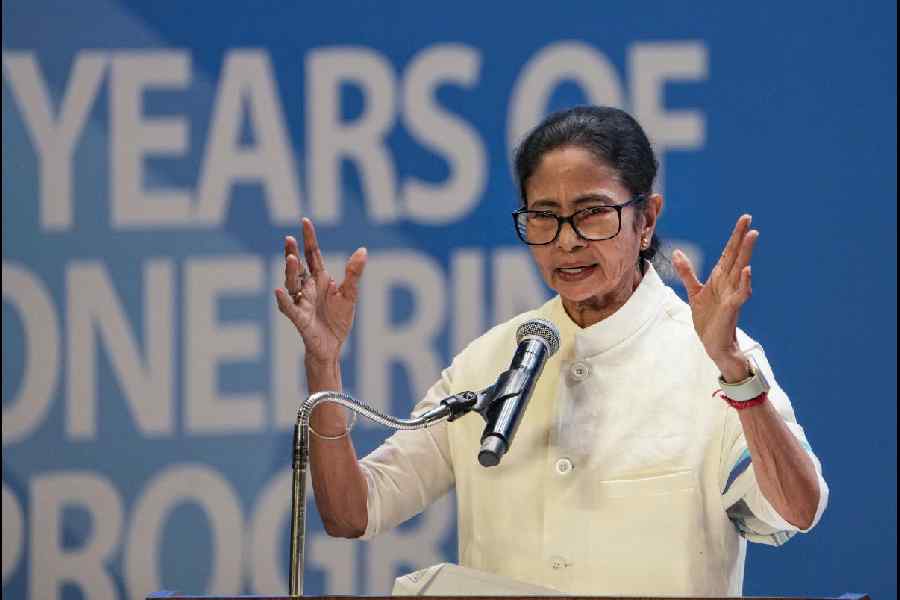President Donald Trump has claimed that Washington is trying to help India and China come out of a “very tough situation”, overlooking the rejection of his offer last month by both neighbours.
“It’s a very tough situation. We are talking to India, we’re talking to China. They have got a big problem there. They have come to blows and we’ll see what happens. We are trying to help them out,” Trump said at the White House on Saturday in response to a question on the flare-up between Asia’s two biggest countries along the Line of Actual Control (LAC).
This is the first time Trump himself has spoken after the hand-to-hand combat between Indian and Chinese troops in the Galwan Valley on June 15 but the US state department has said more than once that it is monitoring the situation.
The latest offer by Trump, who is not unknown to making unilateral claims, comes at a delicate time for Prime Minister Narendra Modi, whose speech on Friday has been interpreted by some as an overture to China that has sought to make propaganda capital out of it.
On May 27, amid reports of face-offs at various points on the LAC but prior to any kind of official word on the gravity of the situation from New Delhi, Trump had said that he had told both capitals that he was prepared to mediate.
China, predictably, had rejected the offer outright but India had opted for a more diplomatic response, reposing faith in the existing bilateral mechanisms — agreements and protocols — to dial down tensions.
China had said that the two countries did not need a “third party” to help them deal with their differences.
Two days later, Trump went a step ahead and said he had spoken to Prime Minister Modi about the situation with China — a claim that was quickly denied by Indian government sources.

Security personnel leave after an encounter with militants at Zoonimar in Srinagar on Sunday. Three militants were killed in the encounter. (PTI)
A few days later, such a conversation did take place when the two leaders spoke over telephone, during which Trump extended an invitation to India to join the G7 along with Russia, Australia and South Korea. It was said to be the first time India had discussed with the US an ongoing situation with China.
Since then, much has changed, marked by the bloodshed on the LAC.
US secretary of state Mike Pompeo had disclosed on Friday that he had raised the situation along the LAC with Chinese state councillor Yang Jiechi when the two met in Hawaii last week.
“The PLA (People’s Liberation Army) has escalated border tensions — we see it today in India, the world’s most popular… populous democracy. And we watch as it militarises the South China Sea and illegally claims more territory there, threatening vital sea lanes, a promise they broke again,” Pompeo said at the Virtual Copenhagen Democracy Summit.
Although India’s growing proximity to the US is considered one of the factors for China’s aggression towards India, several retired diplomats here are of the view that New Delhi should leverage its relationship with the US and other countries like Japan and Australia to deal with Beijing’s efforts to assert its supremacy in the continent.
But a view also exists that any over-dependence on the Americans might exact a price on issues such as Kashmir.
On the Pakistan front — particularly on Kashmir — India has always bristled at the mention of mediation and had been more open about rejecting Trump’s offer to mediate last year.
However, as Trump kept repeating the offer — with the caveat that he would mediate only if the two countries agreed to it — India stopped responding to it publicly, conscious that there is no way to stop him from speaking and taking solace in the fact that the US state department is sensitive to India’s position on mediation.
After the June 15 bloodshed, foreign media had started wondering whether India, bereft of too many choices, would look West. Vijay Gokhale, a former ambassador to China who was foreign secretary before he retired early this year, had written a column in an Indian newspaper that “in the post-Covid age, enjoying the best of both worlds may no longer be an option”.










